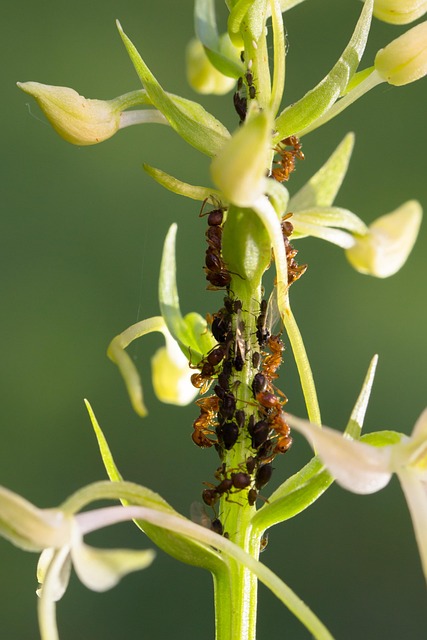Termites in office spaces follow seasonal patterns, with peak activity during warmer months. To prevent infestations, year-round inspections and proactive measures are crucial. This includes regular professional assessments, physical barriers, and eco-friendly methods like biological control. By focusing on structural integrity, proper maintenance, and gap sealing, offices can achieve long-term protection from termite damage.
In the constant battle against pests, a strategic approach is key. Seasonal pest control plans offer a comprehensive solution, addressing year-round risks and ensuring a peaceful environment. Understanding seasonal patterns lets us identify peak activity times, enabling effective management. For businesses, particularly offices, implementing proactive termite control measures is essential. This article explores these strategies, from recognizing seasonal shifts to eco-friendly solutions, providing valuable insights for both homeowners and commercial spaces alike, with a focus on termite control for offices.
Understanding Seasonal Pest Patterns: Identifying Peak Activity Times
Pests, like termites, exhibit distinct seasonal patterns that can pose unique challenges for businesses and office spaces alike. Understanding these fluctuations is key to implementing effective termite control for offices throughout the year. By identifying peak activity times, facility managers can proactively prepare and respond to potential infestations.
For instance, termites tend to be most active during warmer months when their food sources are readily available. This period often coincides with construction activities, making office buildings more susceptible to infestations. Conversely, winter months may see a lull in pest activity but don’t entirely eliminate the risk. Some species become dormant while others seek refuge indoors, making regular inspections crucial year-round to detect and mitigate any early signs of infestation.
Termite Control for Offices: Implementing Proactive Measures
Termite infestations in commercial spaces, particularly offices, can be a significant concern. Proactive termite control measures are essential to mitigate risks and protect these valuable assets. One effective strategy is regular inspections by professional pest control services. These experts can identify potential entry points and signs of an existing infestation early on, allowing for swift action.
Additionally, implementing physical barriers like metal sheeting or mesh screens around the building’s perimeter can deter termites from accessing offices. Proper maintenance practices, including addressing moisture issues and ensuring proper ventilation, further reduce attractants. Regular monitoring and timely treatment options, such as baiting systems or targeted applications of termiticides, are crucial components of an integrated termite control program for offices, ensuring these workspaces remain pest-free throughout the year.
Year-Round Inspection and Maintenance Strategies
Regular inspections are an integral part of any effective seasonal pest control plan, especially for commercial spaces like offices. Termite control for offices requires a proactive approach since these pests can cause significant damage over time. Conducting thorough checks at least twice a year helps identify potential entry points and early signs of infestation. During these inspections, experts should assess the structural integrity of the building, focusing on areas often overlooked, such as windowsills, doors, and utility pipes.
Implementing maintenance strategies in conjunction with inspections is key to long-term protection. This includes sealing any gaps or cracks that could provide access points for pests. Regular cleaning and proper waste management practices also play a crucial role in reducing attractants for termites and other insects. Additionally, keeping greenery well-trimmed and away from the office walls can help prevent wood-boring insects from finding easy entry into buildings.
Eco-Friendly Solutions: Sustainable Pest Management Practices
In today’s world, businesses are increasingly conscious of their environmental impact, and this awareness extends to pest management as well. Eco-friendly solutions offer a sustainable approach to termite control for offices and other commercial spaces. Instead of relying heavily on chemical pesticides, many companies now opt for natural methods that minimize harm to the ecosystem while still maintaining effective pest prevention. One such method is biological control, which involves introducing beneficial insects or pathogens to target specific pests. For example, certain types of wasps can be used to control termite populations by laying their eggs inside termite nests, ensuring a natural and environmentally safe reduction in termite numbers.
Another popular eco-friendly practice is the use of physical barriers and traps. These methods physically prevent pests from entering buildings or specific areas. For termite control, this might include installing metal or mesh shields around the foundations of offices to block entry points. Additionally, bait stations can be used to attract and capture termites without causing harm to other insects or the environment. These sustainable practices not only protect businesses from pest damage but also contribute to a greener and healthier planet.
Seasonal pest control plans are essential for year-round risk management. By understanding pest patterns, implementing proactive measures like termite control for offices, and adopting sustainable practices, property managers can ensure a safe and comfortable environment. Regular inspection and maintenance are key to preventing infestations, making eco-friendly solutions an attractive and responsible choice. Integrating these strategies allows for comprehensive protection, promoting both health and sustainability in various environments, including office spaces.
